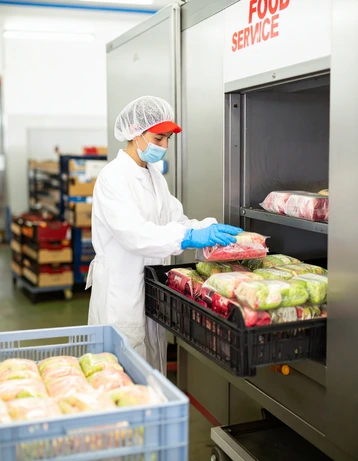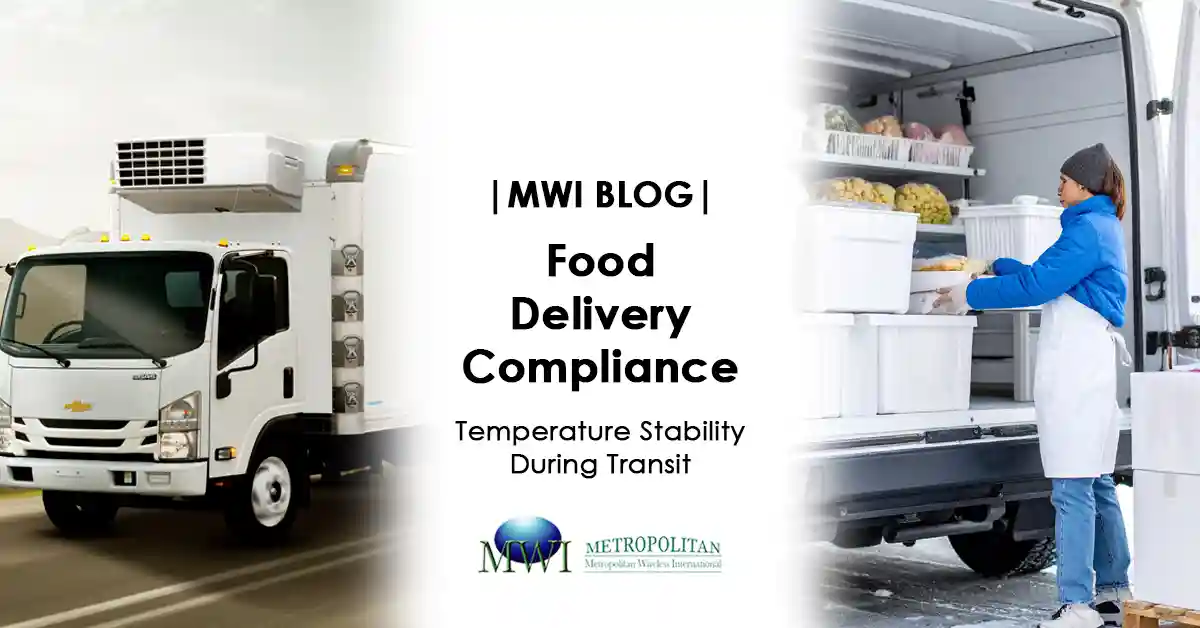With the rise of food delivery platforms and cloud kitchens, the journey from kitchen to customer has become more complex — and more critical. Whether you’re delivering frozen seafood, hot meals, or dairy products, one thing remains essential: temperature stability during transit.
In a market where food safety, quality, and brand reputation are non-negotiable, ensuring proper temperature control isn’t just good practice — it’s a legal and operational necessity. In this guide, we break down how food businesses can stay compliant, minimize spoilage, and maintain customer trust.
Why Temperature Matters in Food Delivery
From the moment food leaves a kitchen or warehouse, it starts to face temperature challenges:
-
External heat (especially in tropical climates like Singapore)
-
Delays due to traffic or routing issues
-
Riders opening thermal bags repeatedly
-
Inconsistent vehicle conditions (scooters, cars, bicycles)
-
Fail to meet regulatory compliance
Even short periods of exposure to unsafe temperatures can cause:
-
Bacterial growth (e.g. Salmonella, Listeria, E. coli)
-
Spoilage of chilled/frozen goods
-
Loss of texture and taste
-
Compliance violations with food safety regulations

Temperature Requirements for Safe Food Transport
According to SFA (Singapore Food Agency) and global food safety standards like HACCP, here are the key thresholds:
| Food Type | Safe Transport Temperature |
|---|---|
| Cooked hot food | ≥ 60°C |
| Chilled ready-to-eat food | 0°C to 4°C |
| Frozen food | ≤ -18°C |
| Ice cream and desserts | -20°C or below |
Any deviation beyond 2 hours in unsafe zones may render the food unsafe for consumption.
Compliance Tips: Ensuring Temperature Stability in Transit
Here’s how food businesses can ensure compliance and quality during deliveries:
✅ 1. Use Insulated Delivery Bags or Boxes
-
Invest in high-quality thermal bags with multiple insulation layers
-
Use hot/cold packs depending on the type of food
-
Avoid overloading to ensure airflow and insulation
✅ 2. Implement Real-Time Temperature Monitoring
Use IoT temperature data loggers or Bluetooth sensors placed in delivery boxes to:
-
Track temperature from pickup to drop-off
-
Send alerts if thresholds are breached
-
Generate logs for traceability and compliance audits
Example: Iotezy’s portable temperature sensors can pair with mobile apps, helping riders and operators spot issues in real time.
✅ 3. Train Your Riders and Staff
-
Teach proper handling of chilled and hot items
-
Limit time spent waiting or leaving food unattended
-
Enforce SOPs for transferring food between storage and transport
✅ 4. Reduce Time from Kitchen to Customer
-
Optimize delivery routing with traffic-aware systems
-
Use geofencing to alert riders of time-sensitive items
-
For multi-stop routes, arrange packages by priority
✅ 5. Maintain a Cold Chain Log
Keep digital or cloud-based records of:
-
Pickup time and temperature
-
Delivery completion time
-
Any alerts or threshold breaches
This supports compliance with ISO 22000, HACCP, and SFA inspections, and builds confidence with B2B clients.
What Happens If You Don’t Comply?
Failure to ensure temperature safety during delivery can result in:
-
Food poisoning incidents leading to public backlash
-
Fines and license suspensions under SFA regulations
-
Platform bans (e.g., GrabFood, Deliveroo requiring safety checks)
-
Negative reviews and reputational damage
In short: your logistics must be as trustworthy as your kitchen.
Smart Temperature Monitoring for Delivery
At Iotezy, we offer portable and wireless solutions tailored for last-mile food logistics:
-
Compact temperature loggers (USB, 4G, BLE)
-
App-based real-time monitoring and breach alerts
-
Battery-powered devices ideal for thermal bags or boxes
-
Cloud dashboard with delivery route insights and reports
-
Compliant with SFA, ISO 22000, and HACCP standards
Trusted by restaurants, cloud kitchens, and F&B distributors across Southeast Asia
Other Blogs
Food Storage
Medical Storage
IT Equipment
Server room temperature & humidity monitoring
Ready to Upgrade Your Food Delivery Compliance?
Whether you operate 3 outlets or 300, it’s time to ensure every order arrives safely, legally, and deliciously.


